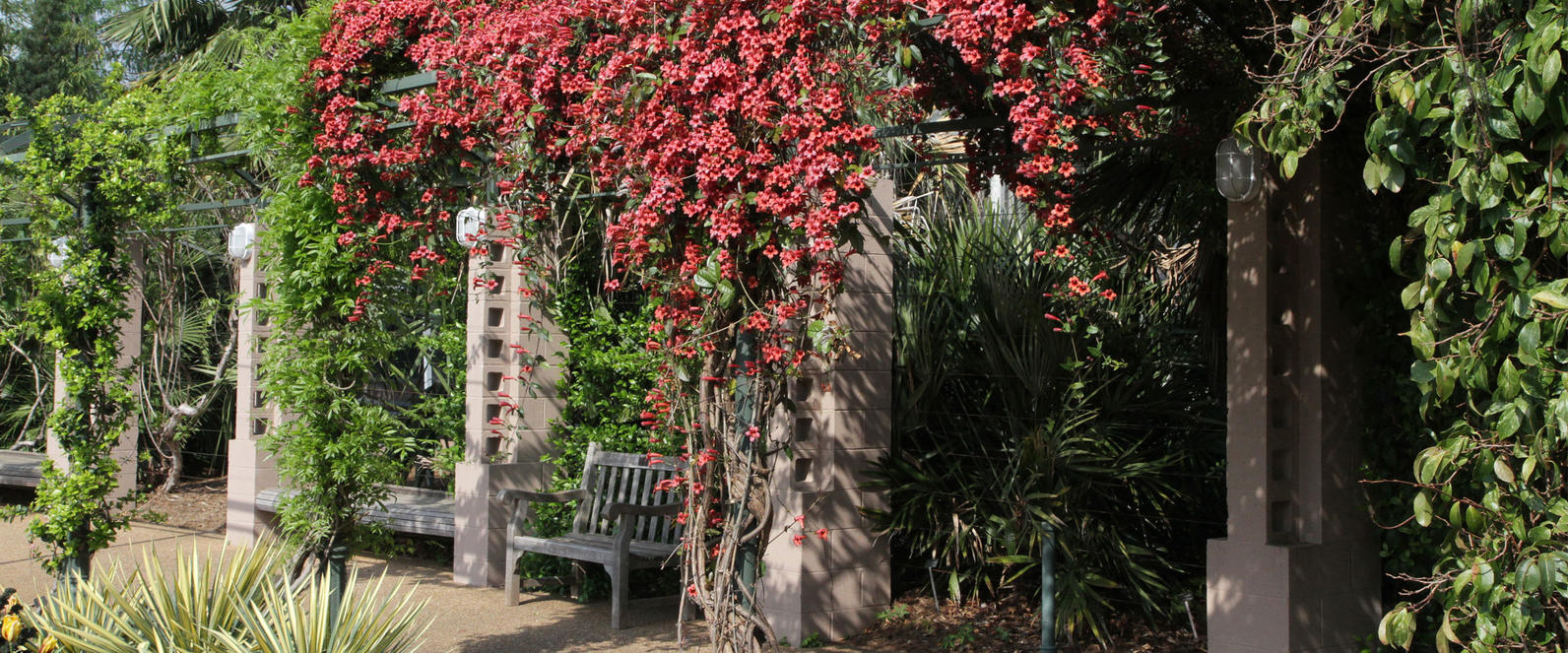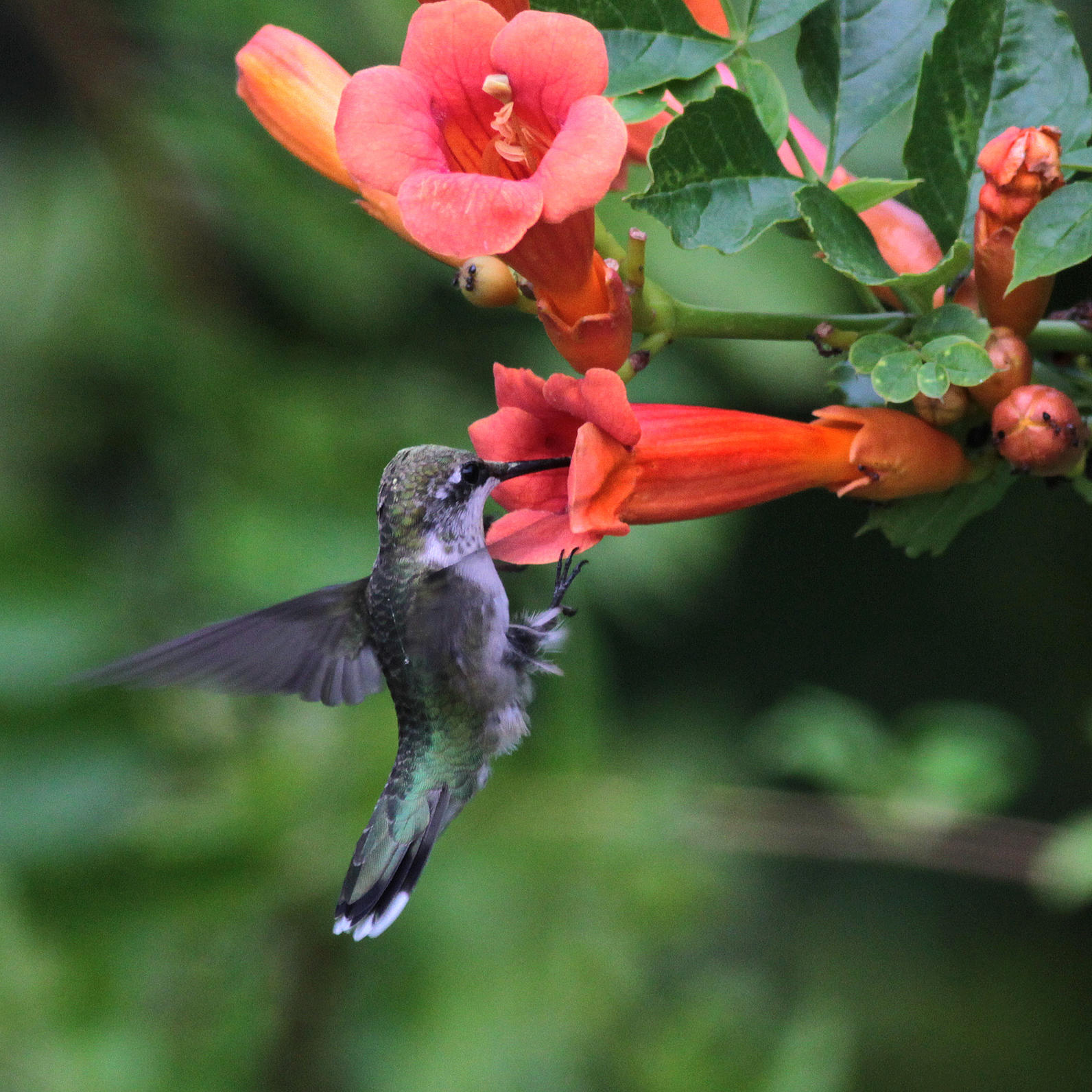Please welcome Audubon North Carolina’s Bird-Friendly Communities Coordinator Kim Brand. Launched in 2013, Audubon North Carolina’s Bird-Friendly Communities initiative is a partnership program involving more than 20 organizations with a vision for creating a more bird-friendly North Carolina. This vision statement guides the goals and projects of the group: “Bird-friendly communities give birds the opportunity to succeed by providing connected habitat dominated by native plants, minimizing threats posed by the built environment, and engaging people of all ages and backgrounds in stewardship of nature.”
These vines are among our Bird-Friendly Native Plants of the Year for 2015. Find this and other plants at your local participating retailer.
Confession: I am too lazy to mix sugar water and clean a hummingbird feeder every few days. I have never had my own hummingbird feeder. In my book, it’s much easier to plant flowers that give hummingbirds the sweet treat they seek. Vines are self-filling hummingbird feeders!
Flower nectar also provides micronutrients that are not present in sugar water, according to Susan Campbell, a hummingbird expert who has banded hundreds of hummers in North Carolina and beyond.
Planting for Humming Birds
Two great vines for attracting hummingbirds in North Carolina are cross vine and trumpet creeper. Once established, both will be covered in flowers during part of the time the Ruby-throated Hummingbirds are here in North Carolina. And they’ll attract bees and other insect pollinators too.
Cross vine, Bignonia capreolata, is native to our NC mountains, piedmont and coastal plain, but may be too tender for higher-elevation areas. It produces yellow to red-orange flowers during April and May, and bears fruit during July and August. It can grow 5 to 80 feet tall, depending on the substrate. Find a spot in sun to part sun and wet to dryish soil. This vine is semi-evergreen with good fall color as the leaves turn yellow. It will grow up a tree trunk, wooden post, arbor or even a brick wall (as it does at my kids’ school in an urban area).

Trumpet creeper, Campsis radicans, is also native to our NC mountains, piedmont and coastal plain, but can spread aggressively in the piedmont and coastal plain. In those warmer areas, it’s a good idea to plant in areas where you don’t mind it taking over. A garden bed surrounded by concrete would work! Trumpet creeper produces orange-red flowers from June through October, and bears fruit during September and October. It can grow 6 to 80 feet tall. Find a spot in sun to part sun and moist-to dry, well-drained soil. This plant is drought-tolerant.

Vines Take Hold
These two vines are not the tight-twining (think honeysuckle) type of vines. Instead, they send roots into the substrate to anchor themselves. Cross vine is unique in that it uses claws on the tips of its tendrils to climb up the tree. Later on, it will send roots into the trunk for firmer attachment. Trumpet creeper uses clinging roots to make its way up a tree or other support.
These vines made our list of Bird-Friendly Native Plants of the Year for 2015. Find this and other plants at your local participating retailer.



